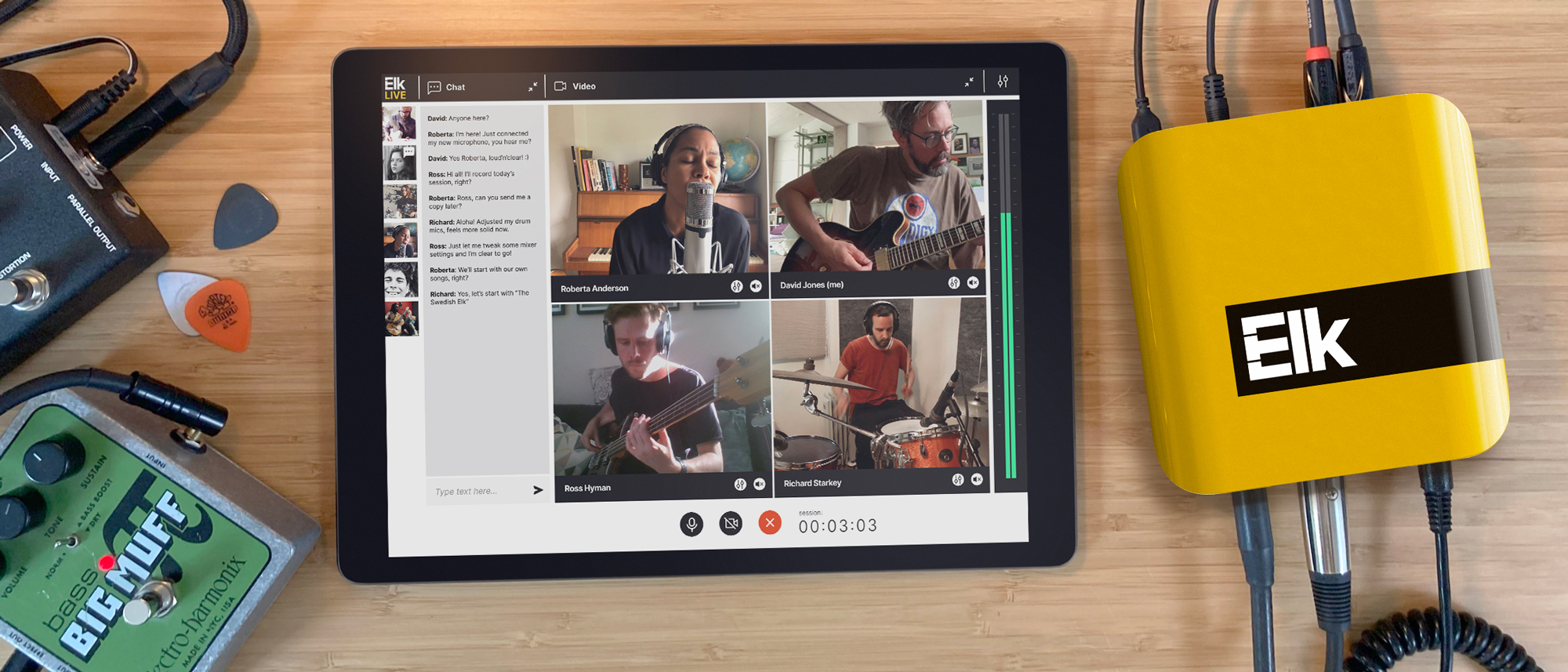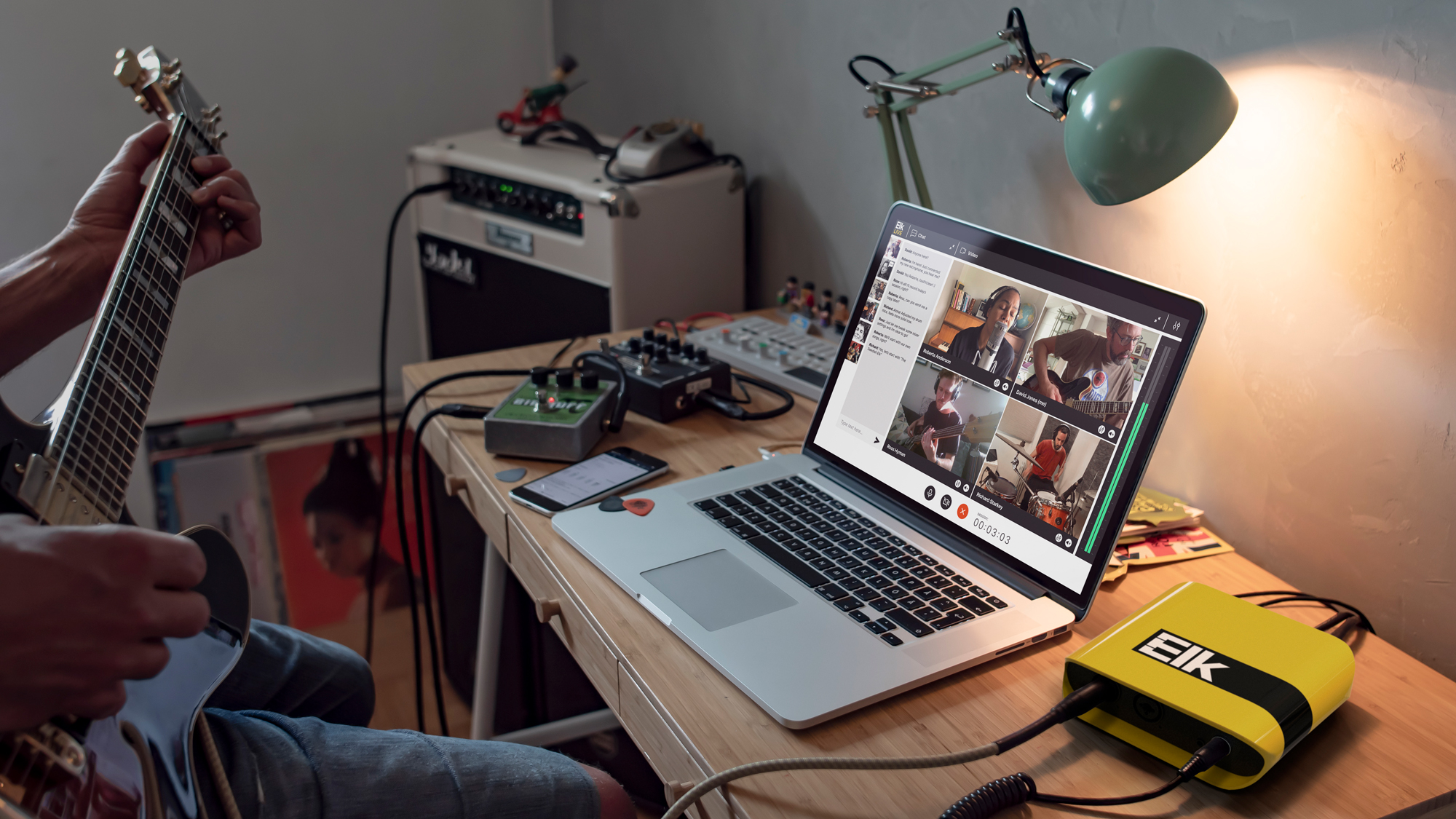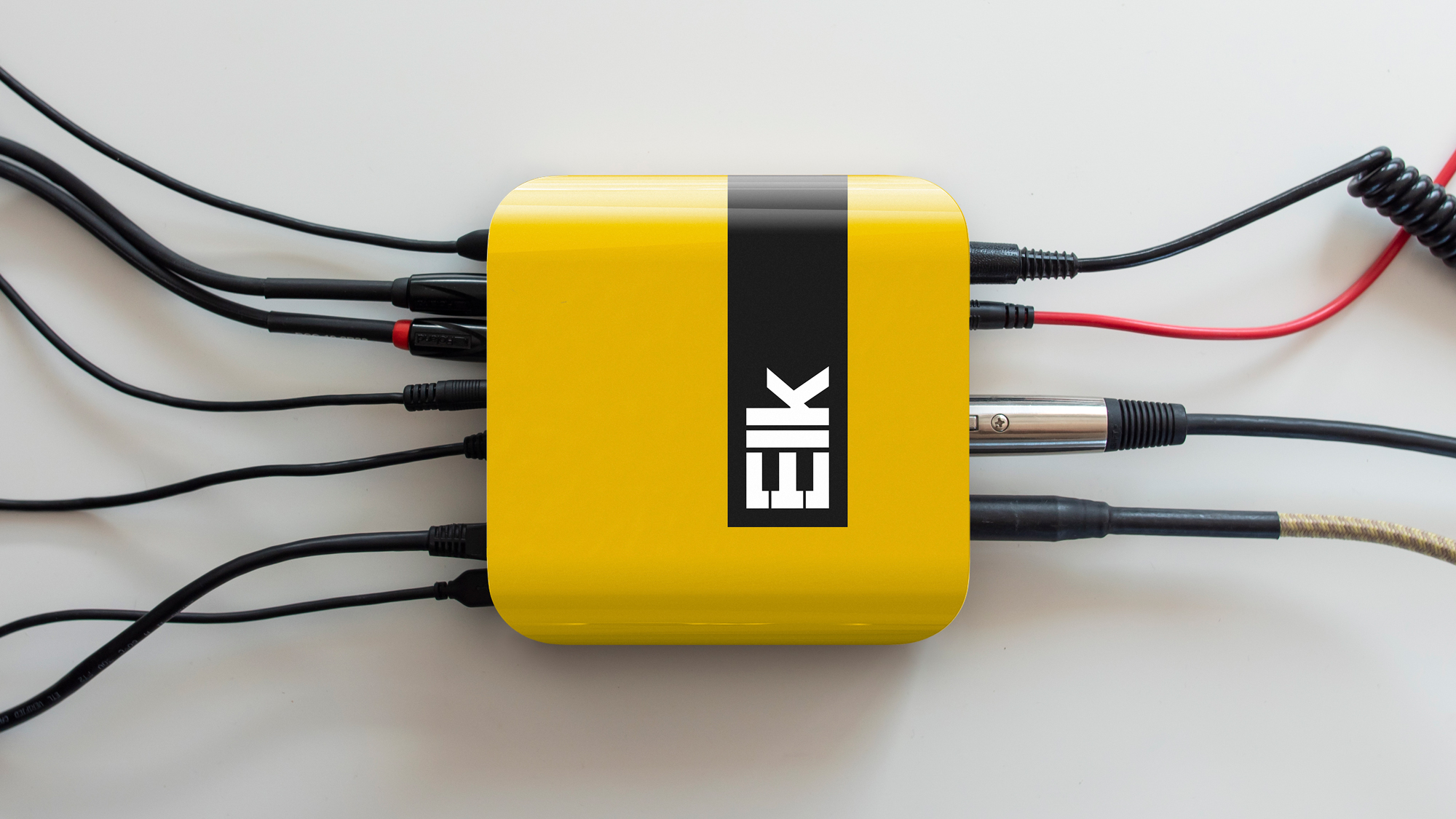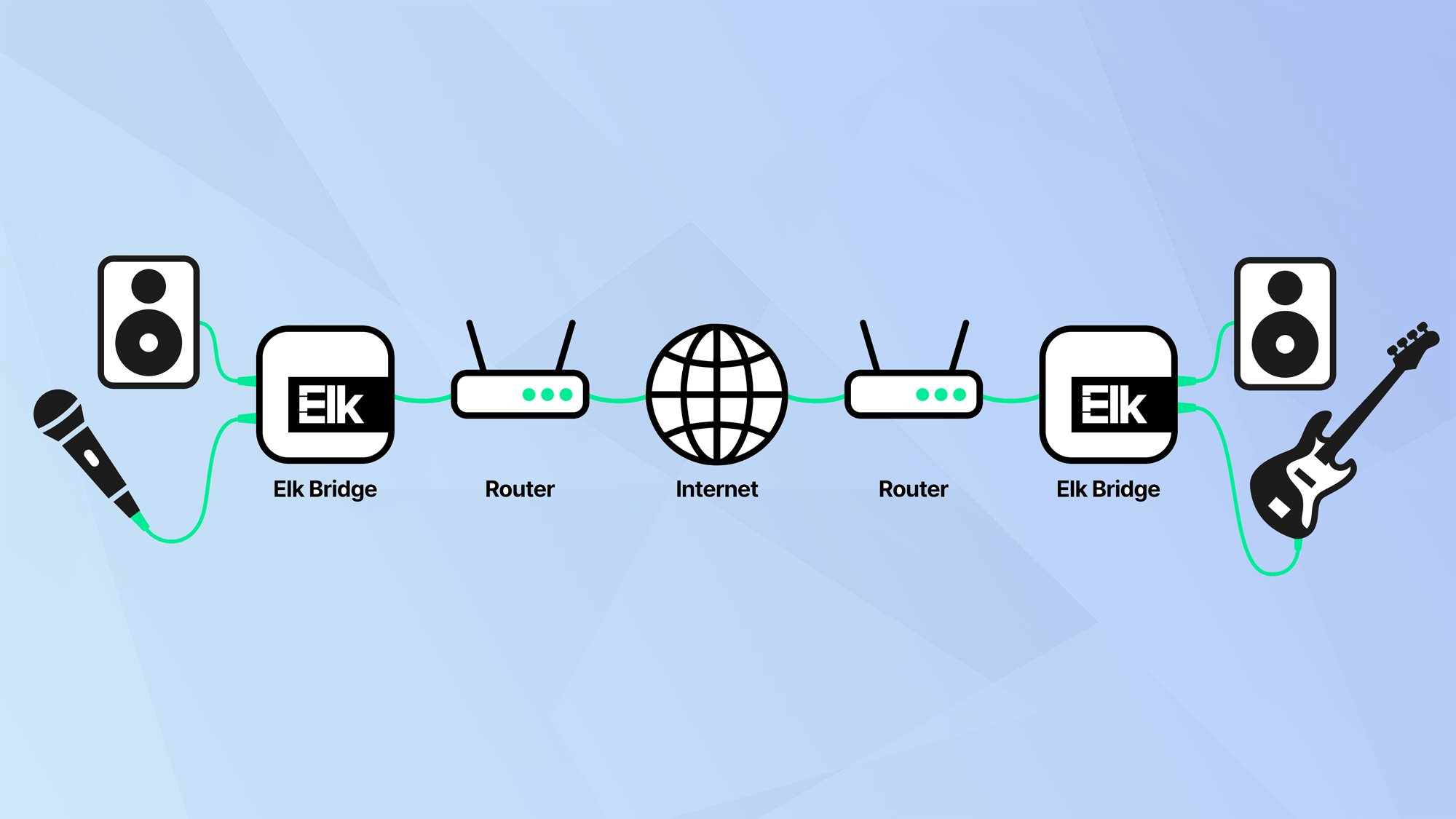Early Verdict
Pros
- +
Up to five real-time connections at once
- +
Uncompressed audio at 24-bit up to 192kHz
- +
Ultra-low latency
- +
Portable device
Cons
- -
Monthly subscription
- -
Software is cloud-based only
- -
Can’t deliver real-time video
Why you can trust Laptop Mag
Latency between devices: 2ms + 1ms per 100km (64 miles) of fiber optic
Audio format: uncompressed/ lossless
Two analog inputs (XLR / TRS combo connector): Line (balanced and unbalanced +22dBu max input level), microphone preamp (-12dBu max input level), instrument (unbalanced on TRS/TS connector only +13dBu max input level), selectable 48V phantom power per port (XLR only)
Four analog outputs: Two unbalanced 1/4" line outputs, +2dBu maximum output level, stereo headphone output (selectable 1/4" or 3,5mm), +4dBu maximum output level
Digital In/Output: ADAT, S/PDIF
USB: Audio/MIDI device
A/D and D/A conversion: 24-bit up to 192kHz
Network: Gigabit (1000BASE-T)
Power: 5V, 3A(15W) USB Type-C
Dimensions: 5.51 x 5.51 x 1.77 inches
Weight: 1.1pounds or 483g
Music, typically, is a group effort that requires players to be close to each other — or at least within hearing distance. Over the last year, musicians, music producers and music teachers have been forced to contend with quarantine lockdown rules that severely hampered their ability to make and share music… in the real world that is.
In the virtual world, as for most of us, video conferencing platforms like Zoom and Google Meet bridged the imposed social distance and, to a degree, allowed the show to go on for some music professionals. But where this technology has shown itself to be effective for conversations (with some dancing around technicalities like unstable connections and dropped audio), it doesn’t cut it for live music which (in most cases) needs to be synchronized in real-time.
Discussing the matter with a drum teacher friend, Nik Schuhbeck at Illegal Drumtrax, I began to get an idea of what teaching over video conference is like. There isn’t a fluid exchange of ideas, techniques and information in the same way a regular teaching session would unfold. Instead, the teacher and student have to repeatedly mute and un-mute to play along with the audio from the other. This audio can sometimes be seconds behind the actual performance as the data makes its way over the internet from one performer to the other.
Herein lies the challenge that the Stockholm-based team at Elk aimed to overcome with Elk LIVE. Which is how to establish and maintain a stable, real-time long-distance audio/video connection capable of allowing musicians to hear and interact with each other in an authentic live setting.
Elk LIVE price and availability
Elk LIVE is available for pre-order from www.elk.live in the U.S., Canada and Europe, and is slated for release at the end of 2021. The system has both hardware and software components. The Elk Bridge hardware will retail at $400 and the web app service is offered as a monthly subscription of $16.
What is Elk LIVE?
The Elk Audio Operating System (OS) emerged from a guitar-over-Wi-FI project conceived by Elk founder and director Michele Benincaso. Benincaso has a passion for building instruments, and trained in violin-making at the Stradivarius International School in Cremona, Italy. When asked about his inspiration, Benincaso says the electric guitar hasn’t changed since the 1920’s. “The whole idea was to create the guitar of the future”, he says, “and we realized that in order to create the guitar of the future we needed to create the audio operating system of the future!”
First trialed by Matt Bellamy of Muse during the band’s 2019 world tour, the Linux-based Elk OS was used to run an Arturia Prophet V soft synth inside the guitar. The generated audio signal could then be broadcast directly from the guitar to front-of-house, meaning Bellamy was not chained to a keyboard and could roam the stage unfettered by cables.
Sign up to receive The Snapshot, a free special dispatch from Laptop Mag, in your inbox.
Since then, Elk OS, which Elk claims is “The World’s Fastest Audio Operating System,” has evolved to become the foundation of an ultra-low latency audio/network interface called Elk Bridge (formerly Aloha by Elk). Housed in a stylish yellow box, it looks suspiciously like a regular digital/audio interface, and is about the same size as the Focusrite Scarlett 2i2. While it will work as a regular audio interface, it is anything but one.
How does Elk LIVE work?
Instead of being a breakout box that attaches to your system as an external audio device, the Elk Bridge connects your internet router directly to your speakers and instrument/mic inputs. You then run the Elk web app on your tablet, cellphone, or music production laptop and connect it to the Elk Bridge by either USB, Wi-Fi or Bluetooth. Your device does no audio processing, acting instead “like a very fancy remote control,” as Elk CMO Björn Ehlers explains.
The Elk Bridge receives your audio signal, converts it into a lossless format in less than a millisecond (thanks to the Elk OS) and sends it to up to four other Elk Bridges connected to your session wherever they are. The system is plug-and-play -- plug in the Elk Bridge, connect it to the web app, and start playing.
When quizzed about compression and latency, Ehlers explains that converting audio down to smaller formats like .mp3 creates more latency in the process despite reducing file sizes. Using a lossless format on an operating system designed solely to convert that format to a digital signal was the key factor in minimizing latency. No other processes happen in the background that might interrupt the signal flow from the audio source to the datapipe.
At the receiving ends, the Elk Bridges used by your bandmates decode the lossless format, again, in under one millisecond. Therefore, the only latency beyond 2 milliseconds is the time it takes to transmit the data down a fiber-optic cable. (Elk LIVE will currently only work over wired connections.) Elk estimates this latency to be about 1ms per 100km (62 miles) of fiber optic. Considering sound travels at around 1 meter per 3ms (approximately 1ft per 1ms), this means two musicians who are 300 miles apart might hear each other in their headphones marginally sooner than two musicians in the same room. The implications of this are staggering.
Elk already demonstrated this extraordinary low latency feat with two jazz musicians in Sweden at a distance of 700km (435 miles). In the video, you can see that they can synchronize and respond to each other as if they were sharing the same space. With this approach, Nik Schuhbeck’s drum students could play along with him at the same time, honing their skills by practicing real-time response (also known as jamming) rather than listening, then thinking and repeating.
The company has also shown how Elk LIVE can be used to sync MIDI, for example, using Ableton Link. With the MIDI and audio synced like this any of the performers can adjust parts, tempo, and settings and the others follow. Electronic artists whose setups might take hours to assemble will appreciate how you could be in a virtual live space with your entire rig in just moments.
For speech radio or podcasts, the Elk LIVE could enable conversations that flow without the interruptions and bandwidth delays we have become so familiar with on internet calls. In fact, as Ehler says, those pauses and interruptions affect the way you act whereas receiving speech cues in real time creates a more natural conversation setting. He jokes, “it’s good enough to have a real argument.”
I’m curious to see at what distance latency does become an issue. In theory, with Elk LIVE, you can connect your entire studio in New York City to another studio in London (55ms) and broadcast your collaboration live to a nightclub in Sydney, Australia (160ms). Benincaso explains that in one latency test between Stockholm and Sydney, they had less latency than a Zoom call from Sydney to Sydney.
Unfortunately, at this stage, video still proves too unwieldy to maintain synchronized audio/video connections for performers on Elk LIVE. But if you compensate for a little latency at the broadcast end, the Elk app lets you livestream the video to match the audio precisely for your audience.
Elk LIVE future implications
So what could all this mean for the future of music on and off the internet? Imagine spending the evening jamming with Herbie Hancock without ever leaving your home, or guesting on a Queen performance at Wembley Stadium from your bathroom (for the good reverb). You can do entire recording sessions in your studio, with all your gear, when the musicians are in other locations across the planet.
If you want the atmosphere of Studio 1 at Abbey Road on your guitar take, you can use Elk LIVE to turn it into your amp room while you play from your couch. Or you could add reverb from the Sydney Opera House in real-time from the shower. You could record a guitar solo for The Strokes in a studio in Los Angeles, then livestream over a stage performance with Gorillaz at Glastonbury, and have a cup of tea in between. The possibilities are dizzying, and as 5G integration becomes a reality, you could theoretically do any of these things using just your phone and your Elk Bridge (though we’re many years away from this).
Verdict
For $400 up front and almost $200 per year, Elk LIVE promises to revolutionize live music over the internet. Bringing remote performances into the same space regardless of almost any distance means live music can finally do in the virtual world what it does so well in the real one — affect us directly in the moment of connection with a performer. With enough folks on board using this system, music producers of all levels will no longer need to send each other files. Instead, they can just set up a recording session as easily as scheduling a Zoom.
The hardware cost is in the realm of breakout boxes which home studio musicians might consider reasonable. What I’m not sure of is whether locking them into a subscription web service à la Adobe will be well received. Then again, recording studios and live venues may appreciate the regular software support the subscription provides.
Elk LIVE Specs
| Audio format | uncompressed/ lossless |
| Digital In/Output | ADAT, S/PDIF |
| Latency between devices | 2ms + 1ms per 100km (64 miles) of fiber optic |
| USB | Audio/MIDI device |
| Power | 5V, 3A(15W) USB Type-C |
| Dimensions | 5.51 x 5.51 x 1.77 inches |
| Network | Gigabit (1000BASE-T) |
| A/D and D/A conversion | 24-bit up to 192kHz |
| Weight | 1.1pounds or 483g |
| Two analog inputs (XLR / TRS combo connector) | Line (balanced and unbalanced +22dBu max input level), microphone preamp (-12dBu max input level), instrument (unbalanced on TRS/TS connector only +13dBu max input level), selectable 48V phantom power per port (XLR only) |
| Four analog outputs | Two unbalanced 1/4" line outputs, +2dBu maximum output level, stereo headphone output (selectable 1/4" or 3,5mm), +4dBu maximum output level |
Peter (PJ) Norman has worked in the photography, film, and music fields since graduating with a Music Science degree in London in 2000. He moved to New York in 2009 to be a freelance producer and creative and has been based in the city ever since. His film work has been accepted to multiple International film festivals including Sundance and Locarno, and his passion for music has led to contributions on more than 10 full-length albums. Peter will occasionally test and write about things that inspire him for Laptop Mag when he isn't helping on the multimedia side of things. He is happiest when lost in the play of light and sound with his Nikon FM2 and a roll of black-and-white film.






